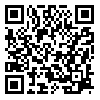Volume 13, Issue 6 (Nov & Dec 2023)
J Research Health 2023, 13(6): 407-416 |
Back to browse issues page
Download citation:
BibTeX | RIS | EndNote | Medlars | ProCite | Reference Manager | RefWorks
Send citation to:



BibTeX | RIS | EndNote | Medlars | ProCite | Reference Manager | RefWorks
Send citation to:
Darabi F, Momeni Shabani S, Mardi A, Nejhaddadgar N. Practical Steps in Designing Intervention to Increase Childbearing Desires: An Intervention Mapping Approach. J Research Health 2023; 13 (6) :407-416
URL: http://jrh.gmu.ac.ir/article-1-2290-en.html
URL: http://jrh.gmu.ac.ir/article-1-2290-en.html
1- Department of Public Health, Asadabad School of Medical Sciences, Asadabad, Iran.
2- Psychological Counseling and Leadership Group, Department of Educational Sciences, Faculty of Education, Istanbul Kültür University, Istanbul, Turkey.
3- Department of Public Health, School of Health, Ardabil University of Medical Sciences, Ardabil, Iran.
4- Department of Health Promotion and Education, School of Public Health, Ardabil University of Medical Sciences, Ardabil, Iran. ,naziladadgar60@gmail.com
2- Psychological Counseling and Leadership Group, Department of Educational Sciences, Faculty of Education, Istanbul Kültür University, Istanbul, Turkey.
3- Department of Public Health, School of Health, Ardabil University of Medical Sciences, Ardabil, Iran.
4- Department of Health Promotion and Education, School of Public Health, Ardabil University of Medical Sciences, Ardabil, Iran. ,
Abstract: (1467 Views)
Background: Increasing the desire to have children is an important priority of the healthcare systems, which requires targeted planning. This paper describes the development of an intervention program using an intervention mapping approach (IMA) to increase the childbearing desires.
Methods: From July to November 2022, the steps of the IMA process were completed. Starting with needs assessment, in this stage, we conducted a literature review, created focus groups, and conducted interviews with local stakeholders; meanwhile, the program objectives and the target audience were determined. Then, the road map for targeted interventions was prepared.
Results: The needs assessment completed questionnaires (n=1288), the literature review, 3 focus groups (n=25 participants), in addition to interviews (n=30 participants) indicated that the most effective factors in the parents’ childbearing low desires were concern about the future of their children, economic problems, low parenting skills, and low skills to interact with their spouse. According to the PRECEDE-PROCEED model awareness, attitude, and self-efficacy were categorized as determinants at the individual level, perceived subjective norm at the family level, and organizational changes at the social level based on the results of the needs assessment. The findings from each step of the process informed successive steps.
Conclusion: The IMA is a control-oriented, systematic, participation-based technique to design and implement targeted and ongoing health promotion programs.
Corresponding author: Nazila Nejhaddadgar, Email: naziladadgar60@gmail.com
You can also search for this author in: PubMed, Google Scholar
Methods: From July to November 2022, the steps of the IMA process were completed. Starting with needs assessment, in this stage, we conducted a literature review, created focus groups, and conducted interviews with local stakeholders; meanwhile, the program objectives and the target audience were determined. Then, the road map for targeted interventions was prepared.
Results: The needs assessment completed questionnaires (n=1288), the literature review, 3 focus groups (n=25 participants), in addition to interviews (n=30 participants) indicated that the most effective factors in the parents’ childbearing low desires were concern about the future of their children, economic problems, low parenting skills, and low skills to interact with their spouse. According to the PRECEDE-PROCEED model awareness, attitude, and self-efficacy were categorized as determinants at the individual level, perceived subjective norm at the family level, and organizational changes at the social level based on the results of the needs assessment. The findings from each step of the process informed successive steps.
Conclusion: The IMA is a control-oriented, systematic, participation-based technique to design and implement targeted and ongoing health promotion programs.
Corresponding author: Nazila Nejhaddadgar, Email: naziladadgar60@gmail.com
You can also search for this author in: PubMed, Google Scholar
Type of Study: Orginal Article |
Subject:
● Health Systems
Received: 2023/02/26 | Accepted: 2023/05/13 | Published: 2023/10/3
Received: 2023/02/26 | Accepted: 2023/05/13 | Published: 2023/10/3
| Rights and permissions | |
 |
This work is licensed under a Creative Commons Attribution-NonCommercial 4.0 International License. |









